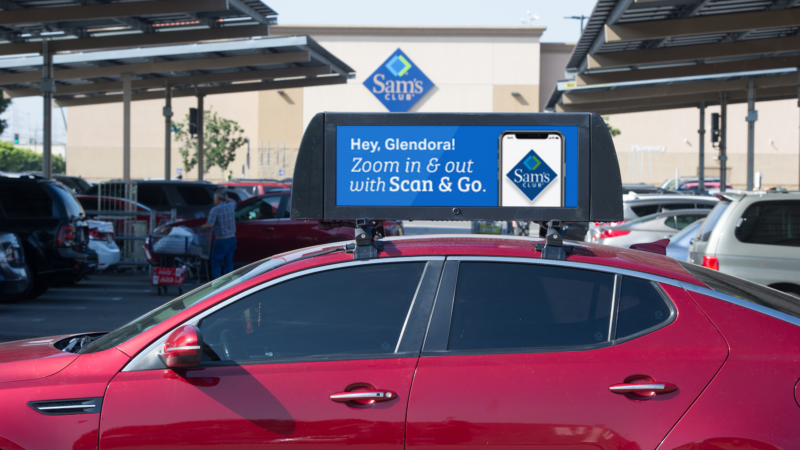Firefly adds mobile device-like targeting to ads on car rooftops
The San Francisco-based startup is delivering ads designed for drivers’ specific paths, with a granularity down to a city block.
A San Francisco-based startup is launching a new platform on Thursday that marries the contextual targeting of mobile to digital-out-of-home (DOOH) signs.
‘Situationally aware’ outdoor mobile signs. Firefly has installed digital signs atop hundreds of taxis and other rent-on-demand vehicles like Lyft or Uber during its months-long beta phase in Los Angeles and San Francisco. The rooftop signs receive ads via 4G and 4G LTE cellular transmission that are what founder and CEO Kaan Gunay called “situationally aware,” with targeting based on location, time, intended demographic, weather or other contextual data.
While this sort of targeting has become commonplace for ads on smartphones or tablets, it’s now just emerging in digital signs. Gunay said his firm is the first to place geo-targeted displays in large numbers on car services, with a granularity that can go down to a city block.
Use cases, driver revenue. As an example use case, he pointed to Brex, a startup-focused credit card that shows ads when the vehicles are near neighborhoods housing a lot of new companies. Or an ad for Sam’s Club can show when the cars are near that retailer, as shown in the image above.
Firefly limits the ad density to no more than eight different kinds of ads on all the vehicles in a given location, such as a city block, and each ad — either static or video — is shown for no more than eight seconds.
Rates are CPM-based, and a percentage of the revenue goes to the driver in most cases, Firefly said. Gunay said the typical driver can make an average of $300 per month from the ads.
Community tie-ins. In addition to helping drivers, Firefly touts its other community services. Ten percent of the ad inventory is reserved for pro bono ad placements by not-for-profit or governmental services, and another ten percent is held for local businesses, sometimes at special rates. Air sensors accompany the signs, providing air quality data that Firefly freely provides to the Clean Air Coalition.
Gunay said there are no stats yet on whether this kind of targeted, mobile DOOH advertising works better than other kinds of outdoor marketing. A rollout to New York is planned for early next year, followed by other US cities.
Why you should care. As outdoor digital signs replace static ones, the DOOH platform is rapidly becoming an integrated part of the digital ad ecosystem. For many demand side platforms, DOOH has become just another channel.
With such rollouts as Firefly’s, mobile DOOH signage is now becoming just another form of mobile advertising — except that it sits on a rooftop, rather than in a person’s hand or on a wrist.
Contributing authors are invited to create content for MarTech and are chosen for their expertise and contribution to the martech community. Our contributors work under the oversight of the editorial staff and contributions are checked for quality and relevance to our readers. The opinions they express are their own.
Related stories
